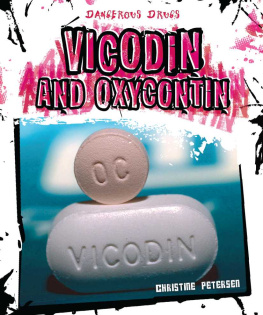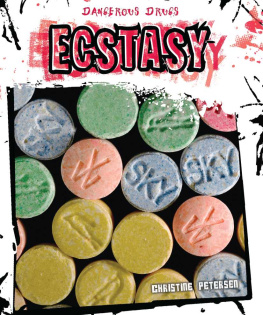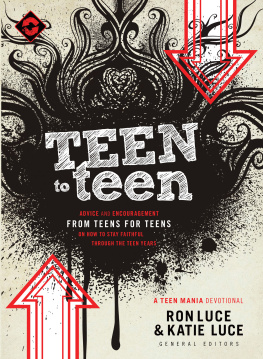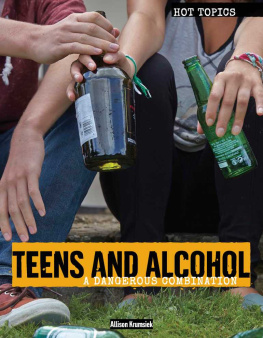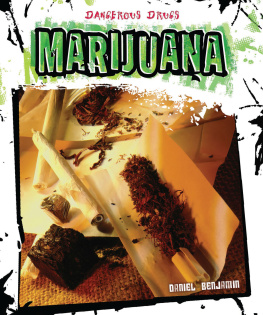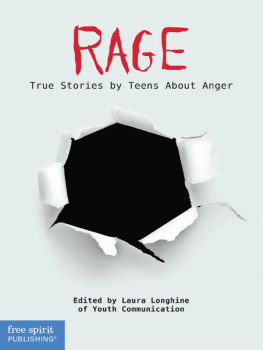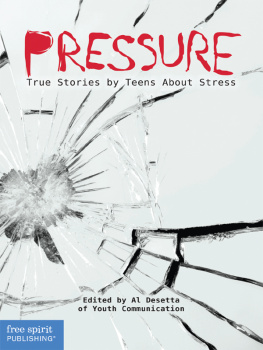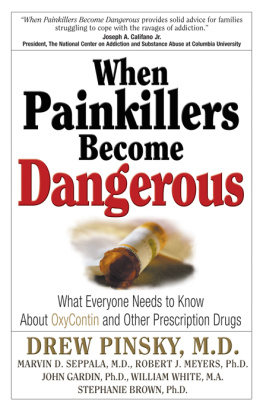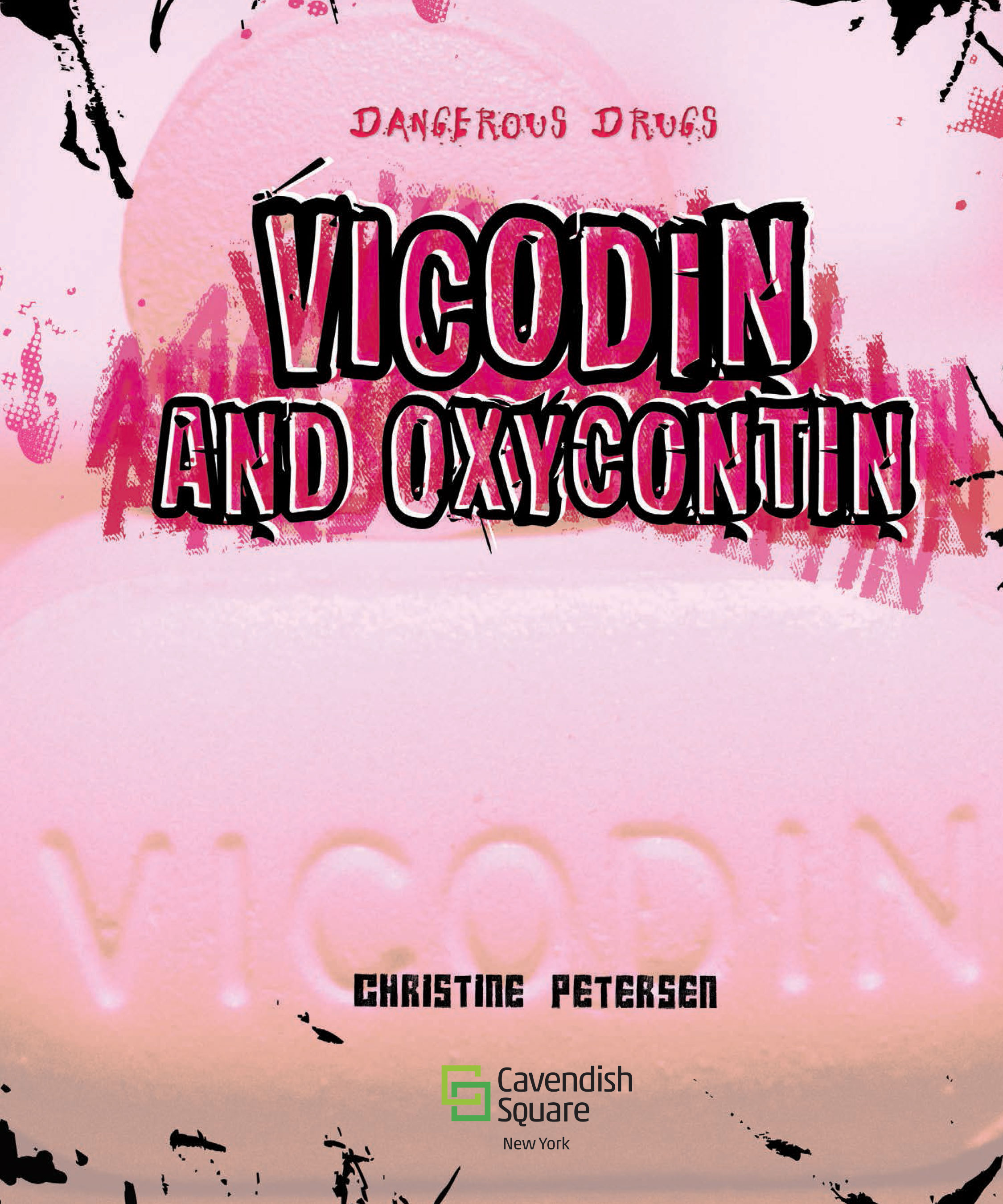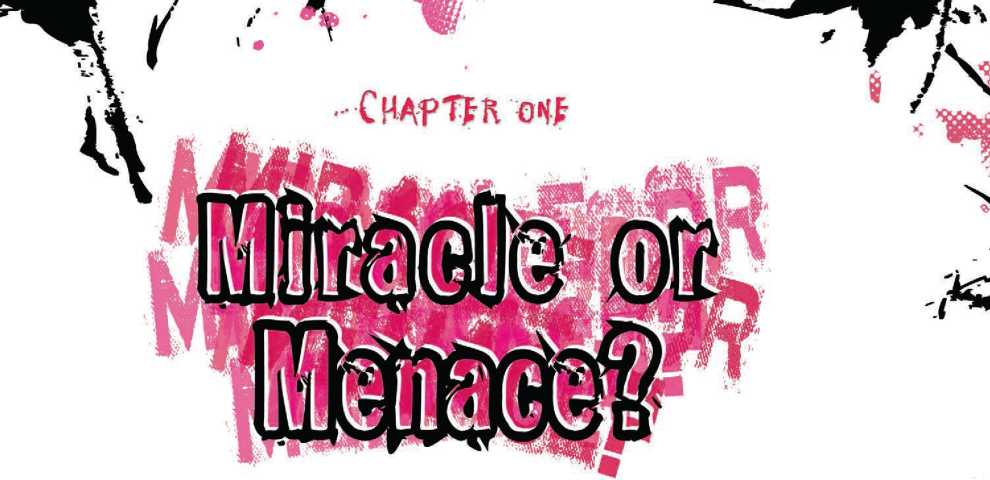In order to protect the privacy of sources, only first names were used throughout the book. An asterisk (*) following a name indicates the use of a pseudonym.
Published in 2014 by Cavendish Square Publishing, LLC 303 Park Avenue South, Suite 1247, New York, NY 10010
Copyright 2014 by Cavendish Square Publishing, LLC
First Edition
No part of this publication may be reproduced, stored in a retrieval system, or transmitted in any form or by any meanselectronic, mechanical, photocopying, recording, or otherwisewithout the prior permission of the copyright owner. Request for permission should be addressed to Permissions, Cavendish Square Publishing, 303 Park Avenue South, Suite 1247, New York, NY 10010. Tel (877) 980-4450; fax (877) 980-4454.
Website: cavendishsq.com
This publication represents the opinions and views of the author based on his or her personal experience, knowledge, and research. The information in this book serves as a general guide only. The author and publisher have used their best efforts in preparing this book and disclaim liability rising directly or indirectly from the use and application of this book.
CPSIA Compliance Information: Batch #WS13CSQ
All websites were available and accurate when this book was sent to press.
Library of Congress Cataloging -Publication Data Petersen, Christine.
Vicodin and OxyContin / Christine Petersen. p. cm. (Dangerous drugs)
Summary: Provides comprehensive information on the dangers of Vicodin and OxyContin abuse
Provided by publisher.
Includes bibliographical references and index.
ISBN 978-1-60870-827-7 (hardcover) ISBN 978-1-62712-063-0 (paperback)
ISBN 978-1-60870-833-8 (ebook)
1. NarcoticsJuvenile literature. 2. Drug addictionJuvenile literature. I. Title. II. Series.
RC566.P45 2013 616.86_32dc23 2011027729
EDITOR:Christine Florie
art director: Anahid Hamparian
series designer:Kristen Branch
Expert Reader: Lewis S. Nelson, MD, associate professor, Department of Emergency Medicine,NYU Emergency Medicine Associates, New York, New York
Photo research by Marybeth Kavanagh
Cover photo by Presselect/Alamy
The photographs in this book are used by permission and through the courtesy of: SuperStock. The Copyright Group, 4; Belinda Images, 17; age fotostock, 41; Kablonk, 53; Erik Isakson/Blend Images, 55; Photo Researchers, Inc.: Medi-Mation Ltd, 7; Getty Images: Photo Researchers, 8L; Rex Ziak/Stone, 43; altrendo images, 49; AP Photo: Toby Talbot, 8R; Steven Senne, 22; Alamy: Nigel Cattlin, 10; joefoxphoto, 35; Newscom: Kathryn Indiek/ZUMAPRESS, 19L; Maria Ramirez, 19R; Eduardo Arrivabene/Splash News, 26; Odilon Dimier/Altopress, 29; Custom Medical Stock Photo, 31; Corbis: Boris Roessler/dpa, 40; Kurt Rogers/San Francisco Chronicle, 46 Most subjects in these photos are models.
CONTENTS
CHAPTER 1
Miracle or Menace?
CHAPTER 2
A Good Time?
CHAPTER 3
The Danger Zone
CHAPTER 4
This Is Your Life
CHAPTER 5
A Better Way

Left:Pain cannot be seen by others, yet it is something many people experience due to injury or illness.
"P AIN IS SUCH AN UNCOMFORTABLE FEEL-ing that even a tiny amount of it is enough to ruin every enjoyment. The famed cowboy actor Will Rogers made this comment almost a century ago. His plain words say a lot about the power of pain. Pain is more than a physical experience. It has the potential to invade the mind, heart, and soul. Perhaps this is why people have always looked for ways to make pain go away.
Although pain can make a person miserable, it serves an important purpose. Pain is a warning system. It is an alarm signaling that something is wrong within the body or affecting it from the outside. Touch a hot pan on the stove, and nerves in your skin instantly send signals to your brain. The signals travel along the complex network of nerves leading from the skin on your hand to your spinal cord and brain. Within milliseconds, your brain processes this information, and your hand pulls back rapidly.
Modern medicine offers many options for pain relief. Mild pain is treated with nonprescription analgesics, which ease pain without causing sleepiness. Adults can purchase aspirin, acetaminophen, and ibuprofen over the counter at pharmacies and other stores. These drugs are used to relieve a headache, a fever caused by a cold, or muscle aches after a hard workout.Opioid analgesics (also known as opioids) are a separate group of painkillers. These drugs are made from the juice of the opium poppy or are made in a laboratory from opium-like chemicals. Opioids control pain by mimicking endorphins, a group of chemicals naturally produced when the body begins to feel pain. Endorphins bind to dock-like receptor sites found in the brain and spinal cord. When the docks are filled either by endorphins or by opioid chemicals the feeling of pain eases. Because opioid drugs are so powerful, they are generally legally available only with a doctors prescription.
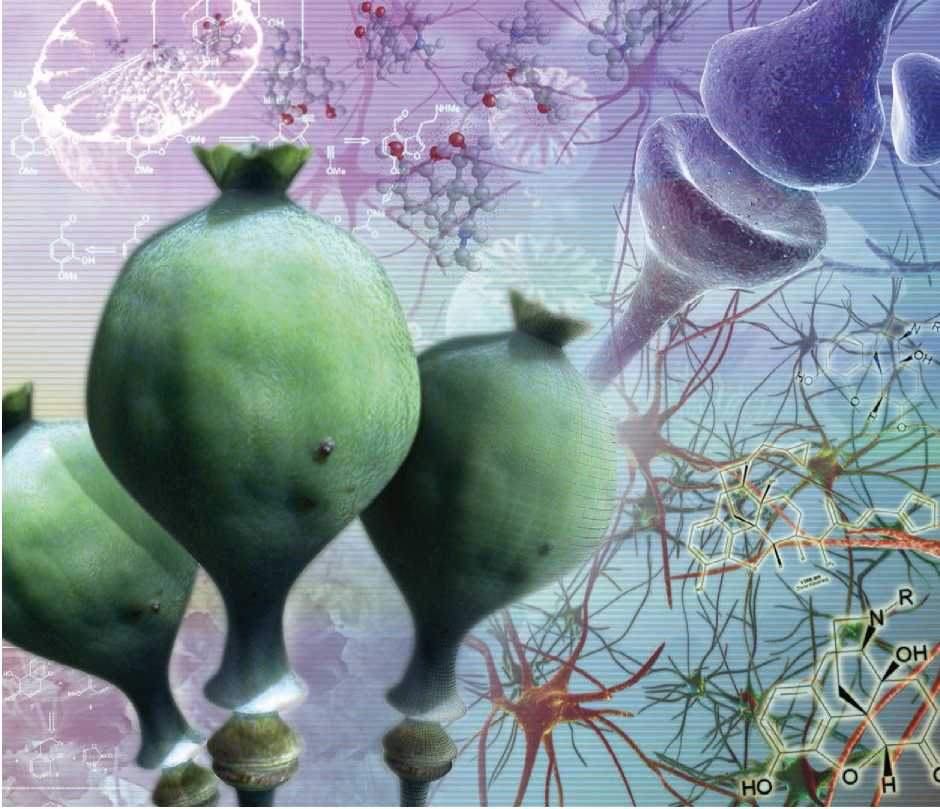
Opioid chemicals (red at top center) bind to nerve cells and block the pathways of pain signals. They are highly addictive. Green opium pods are depicted on the left .
Vicodin and OxyContin are two of the most commonly prescribed opioids available today. Under the supervision of a doctor, these and similar drugs are prescribed for patients with serious pain-related problems. Yet Vicodin and OxyContin are also among the nations most abused prescription drugs. They have the power to turn a healthy persons life into a nightmare.
Vicodin (left) and OxyContin (right) are two of the most commonly misused prescription painkillers in the United States.
THE FIRST PAINKILLER
Although Vicodin and OxyContin have been available for just a few decades, chemically they are similar to opium, the worlds oldest known painkilling drug. Modern researchers have found stone tablets describing how the Sumerians obtained opium from poppy flowers more than five thousand years ago. Travelers and traders eventually brought this drug to Egypt, Greece, India, and China.
NAME CALLING
Your parents or guardians may be the ones buying and dispensing medications for you right now. But in a fewyears, youll be responsible for your own health care. Its importan to learn about drug safety and to understand the language used by doctors and pharmacists to describe different types of health care products. Brand-name products are specific products made byparticular manufacturers. New drugs must be approved by the U.S. Food and Drug Administration (FDA). If the FDA determinesthat a drug is safe and effective, the manufacturer can choose a name and begin selling the drug to pharmacies. The brand-name nonprescription analgesics Tylenol, Motrin, andAleve are recognized by many. Vicodin and OxyContin are two of the many brand-name opioids currently available. After a brand-name drug has been on the market for twenty years, other drug manufacturers are allowed to developgeneric versions of that same drug. Generic drugs are referred to by their chemical names. The generic name for Tylenol is a cetaminophen. The generic for Motrin is ibuprofen. Vicodincontains two generic drugs: an opioid called hydrocodone plus acetaminophen. OxyContins generic is known as oxycodone. If the pharmacist fills your prescription with a generic drug, you can be confident it will work as well as the brand name equivalent. However, you should never assume its safe to try a drug because its just a generic. Hydrocodone andoxycodone may not be brand names, but they are powerful drugs. A drug whatever its called should never be taken unless that medication was prescribed by physician.

